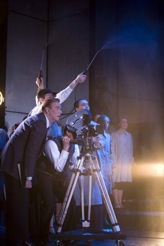
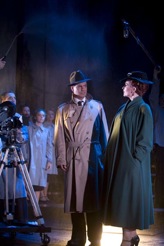
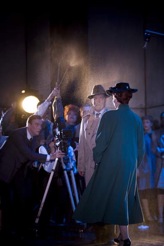
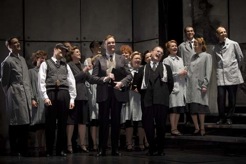
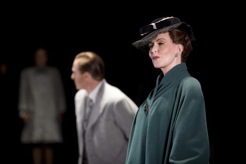
______________________________________________________________
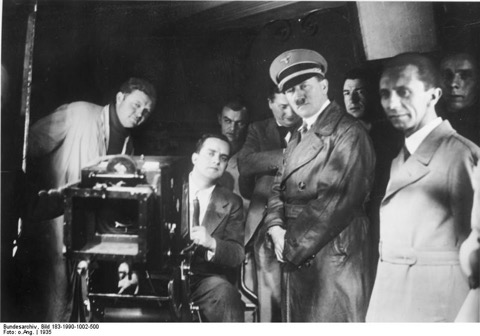 Hitler and Goebbels on visit at the UFA, on the left UPM Stapenhorst, January 1935
Hitler and Goebbels on visit at the UFA, on the left UPM Stapenhorst, January 1935National conservative Hugenberg in the course of the Nazi Machtergreifung on 30 January 1933 became Reich Minister of Economy in Hitler's cabinet. He resigned in June, nevertheless the company became a compliant producer of Nazi propaganda films supervised by Hugenberg's cabinet colleague Joseph Goebbels. His Ministry of Public Enlightenment and Propaganda essentially controlled the content of UFA films through political threat. Because of this, Lang, like many of his UFA colleagues, would soon leave Germany to work in Hollywood. Decrees by the Reichsfilmkammer established in July 1933 officially banned the employment of artists of Jewish descent.
During the 1930s UFA produced both lighthearted musicals and comedies (starring such genuine talents as Truus van Aalten) – and, as the Nazi Party gained power, odious examples of antisemitic propaganda.
In March 1937 Hugenberg was forced to sell his shares to the Cautio Trust company, which was actually controlled by the Propaganda Ministry. Thereby the Nazis de facto held 72% of UFA's shares and implemented their party fellow Carl Froelich as a production supervisor at the management board. In 1942 the company was nationalized totally by the Third Reich as the monopoly parent company of the German state's film industry, under which were absorbed all other production and distribution companies still active at that time like Bavaria Film and Wien-Film (former Tobis-Sascha-Filmindustrie AG) with their studio facilities.
During the war the studio made several part entertainment, part propaganda feature films using the Agfacolor process, such as Münchhausen (1943) and Kolberg (1945). The studio's design was also an inspiration to the newly constructed Manchukuo Film Association.
(Wikipedia)